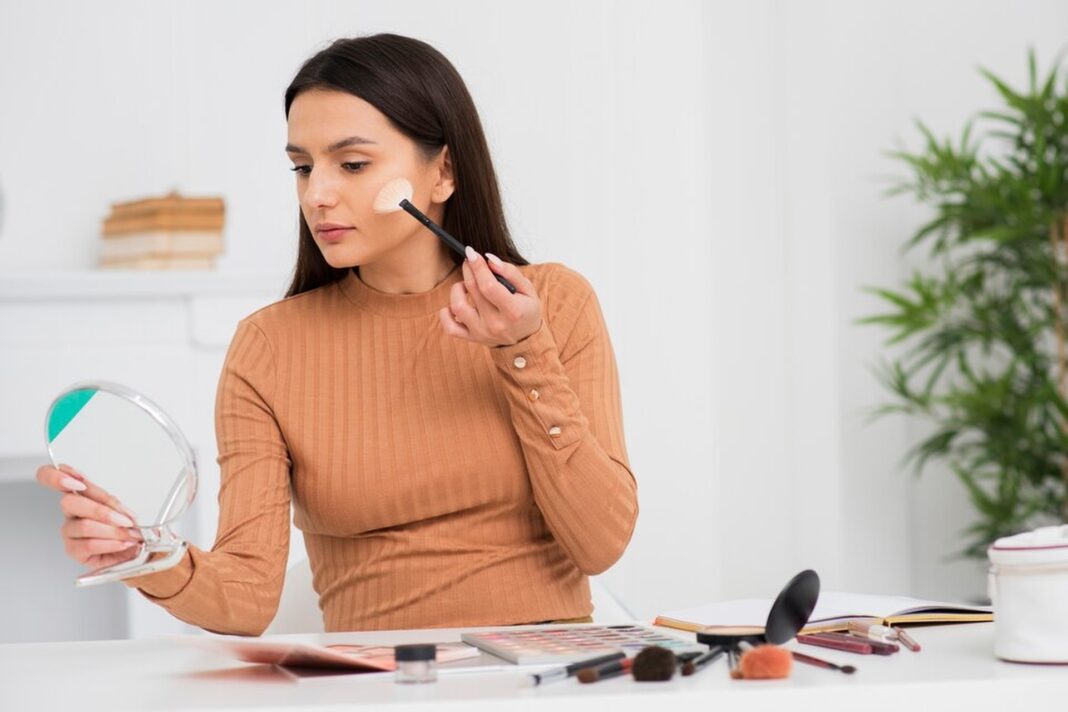Understanding Your Skin Type
Effective skin care requires skin type knowledge. Skin is unique to each individual. Skin type depends on heredity, environment and lifestyle. Skin types include oily dry combination sensitive and normal. Oily skin is glossy and acne prone. Flakes and tight skin are signs of dry skin. Combination skin has oily and dry patches. Sensitive skin responds to products and environmental changes. Normal skin is balanced and neither oily or dry.
Skin type is determined via observation. Monitor your skin throughout the day. What items were performed successfully before Assess your skin climate response. To determine your skin type cleanse and wait a few hours for oil production. Consider how your skin feels in various situations. Dermatologists can also diagnose skin types. Knowing your skin type helps you choose cosmetics. Preventing reactions and ensuring treatment success starts here.
The Importance Of Patch Testing
Patch testing is essential in skincare. It reduces new product reactions. Even reputable products might irritate. Patch tests include putting a small quantity of the substance into a hidden region of skin. Testing often occurs behind the ear or within the wrist. Let the product sit for 2448 hours. Check for redness, swelling and itching. If inflammation develops the product may not be right for you.
Cosmetic chemicals often cause allergies. Common offenders include fragrances, preservatives and oils. Patch testing reduces outbreaks and responses. It is crucial for sensitive or pre existing skin disorders. Multiple product launches complicate responses. One product testing clarifies which product caused a problem. Patch testing is very important for allergy sufferers. This precaution improves skin care safety and skin health.
Reading Ingredient Labels
Cosmetic ingredient labels must be read. Consumers learn about skin products from ingredients. Knowledge of active substances aids product selection. Many labels utilize ambiguous language making it impossible to tell what is good. Know common elements to improve your purchasing experience. Hyaluronic acid hydrates while salicylic acid fights acne.
Weight descending ingredient lists are common. This shows the most concentrated components. Some people must avoid specific components owing to sensitivities. Common skin irritants include parabens and sulfates. Knowing what to look for improves customer decisions. Consumers should study unusual substances before buying. Understanding common chemicals helps interpret goods. Informing consumers prevents unwanted responses and negative effects. Reading labels helps individuals care for their skin.
Choosing The Right Formulation
Successful skin care requires selecting the proper formulation. Various formulas address various skin issues. Common types include lotions, creams , gels and serums. Each hydrates differently and has various advantages. Gels seem lighter on oily skin than creams which are heavier for dry skin.
Addressing specific issues complicates selection. Serums cure wrinkles and dark spots with concentrated active components. Lotions may be lightweight and moisturizing. Retinol and peptides rejuvenate. This choice is easier with skin type. Oil free or mattifying products may help oily skin.
Reviewing and consulting dermatologists enhances decision making. Individual requirements change with the seasons. Colder months may need product changes. Happy skin comes from researching and identifying requirements. Finding the proper mix improves skincare efficacy and enjoyment. Personalized formulas are essential for success.
Identifying Your Skin Concerns
Identifying skin issues is essential in skincare. Improving skin health frequently starts with fixing problems. Acne hyperpigmentation dryness and aging are common issues. Each issue includes targeted treatments and products. For instance acne may need salicylic acid or benzoyl peroxide.
Vitamin C or niacinamide helps reduce hyperpigmentation. Emollient rich lotions and hydration may help dry skin. Antioxidants and retinoids reduce fine wrinkles. Understanding individual issues narrows solutions. Noting that certain problems may be connected is crucial. Dryness might worsen sensitivity causing further problems.
Keeping track of skin behavior changes might also assist. Monitor product and environmental responses. Professional skin care consultations give personalized advice. Finally patience is key. Time affects product efficacy. Methodically addressing issues improves skin and well being.
The Role Of Spf In Cosmetics
SPF is important in cosmetics. It shields skin from UV damage. Prevent sunburn premature aging and skin cancer with daily SPF. Several cosmetic companies now include SPF. The integration simplifies sun protection for customers.
Choosing SPF rich products is crucial. Dermatologists advise daily SPF 30 usage. Higher SPF levels protect more but should not replace reapplication. NO product totally blocks UV radiation. Using another sunscreen may boost protection.
Understanding UV radiation is essential for SPF product selection. UVB rays induce sunburn whereas UVA rays harm skin. Broad spectrum protection defends against both kinds. Daily SPF uses greatly impact skin health. Even on clouds UV rays penetrate. Regular SPF use maintains skin health and attractiveness.
How can I tell if a product is suitable for my skin type?
Steps are needed to determine whether a product is right for your skin. Review the product description and advantages. Many products target oily dry or mixed skin. Ingredients highlight appropriateness. Hyaluronic acid products are good for dry skin while oil free solutions are good for oily skin.
Patch testing shows compatibility. Use a little product in a discrete area. Check for side effects throughout 2448 hours. Dermatologist consultation improves accuracy. Professionals evaluate skin health and propose products.
Research and read reviews. People with similar skin types may advise you. Your skin health including flare ups and dryness must be assessed. Seasonal fluctuations may need adjustments. Following your skin responses leads to educated decisions.
Why Should I Patch Test Cosmetics?
Cosmetic patch testing is necessary for several reasons. It reduces new product allergies and discomfort. Cosmetics sometimes include allergen causing active chemicals, preservatives and scents. Patch tests apply a small quantity to a skin region to check for responses. Inner wrist or ear testing is typical. Waiting 2448 hours lets responses emerge. Redness swelling or itching may indicate an unsuitable product.
Patch testing is crucial for sensitive or allergy prone skin. Multiple product introductions confuse responses. One product isolation works well. Keeping skin care procedures basic clarifies what works. These safeguards provide a safer routine and healthier happier skin. Patch testing protects, prevents side effects and improves skin care.



